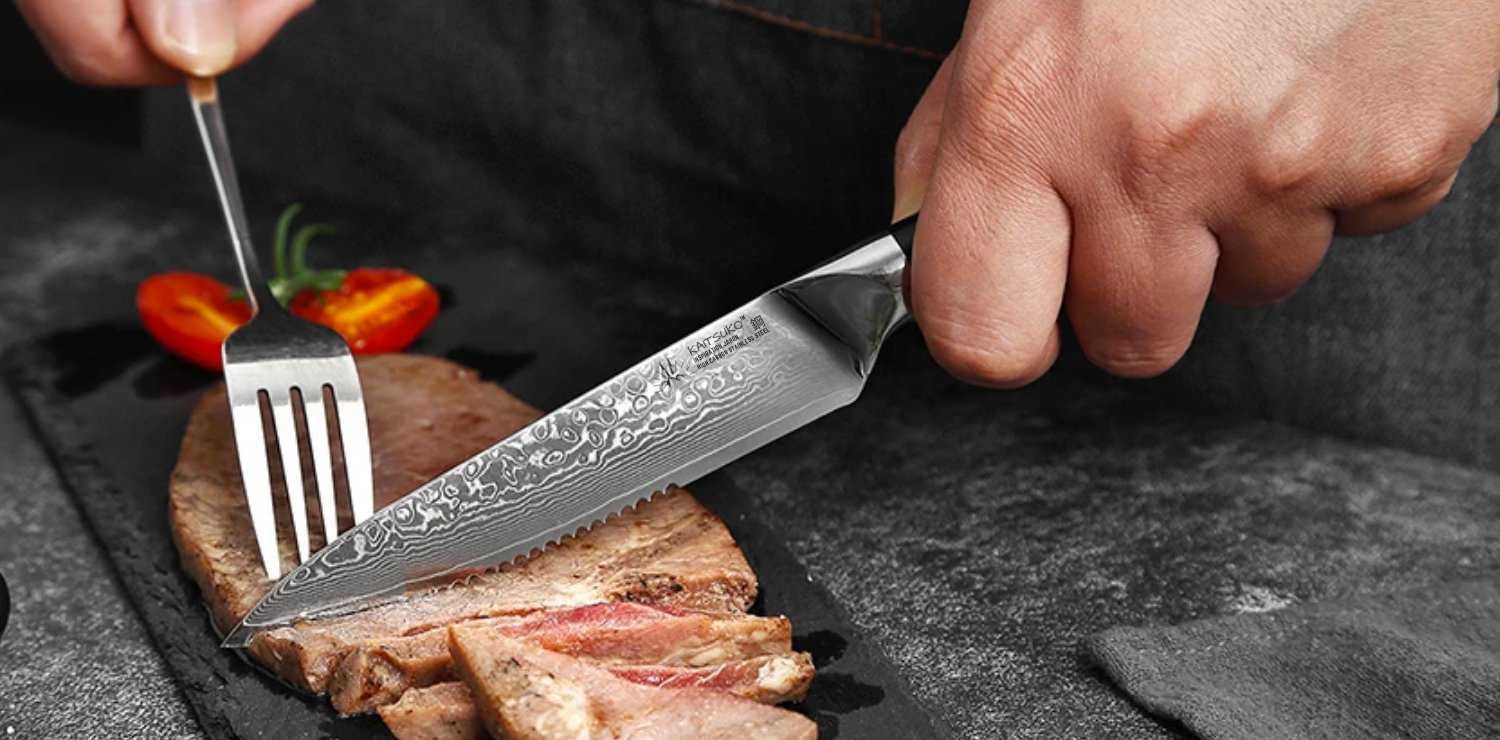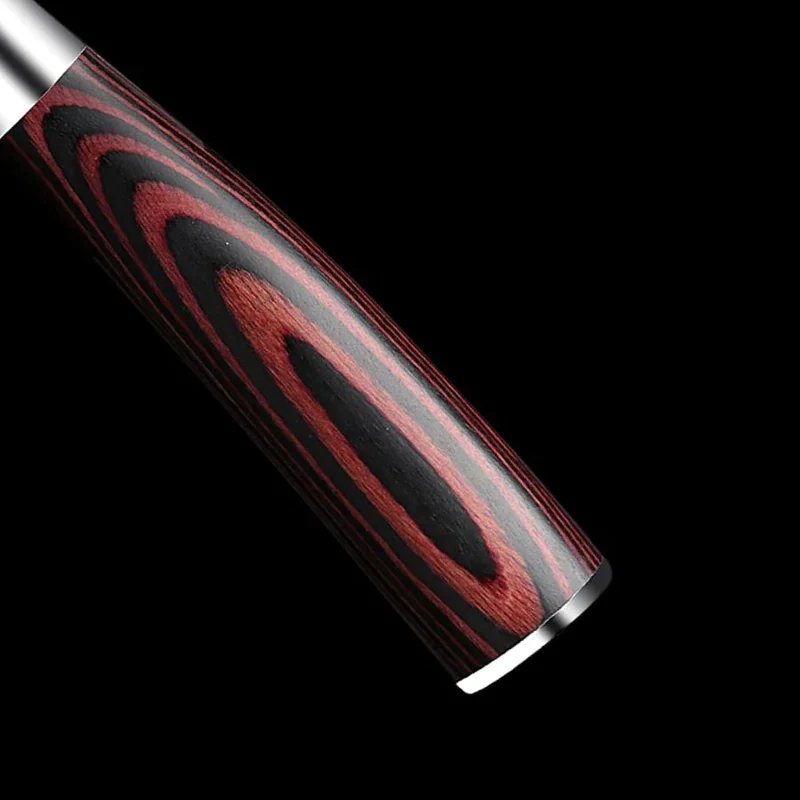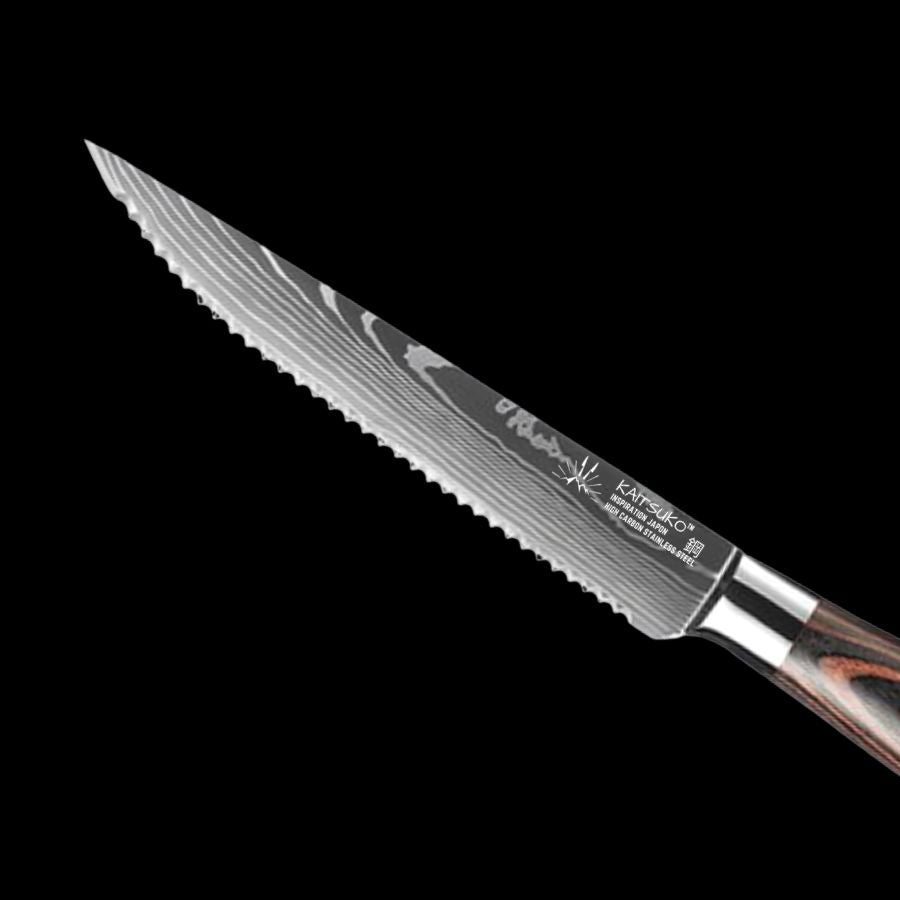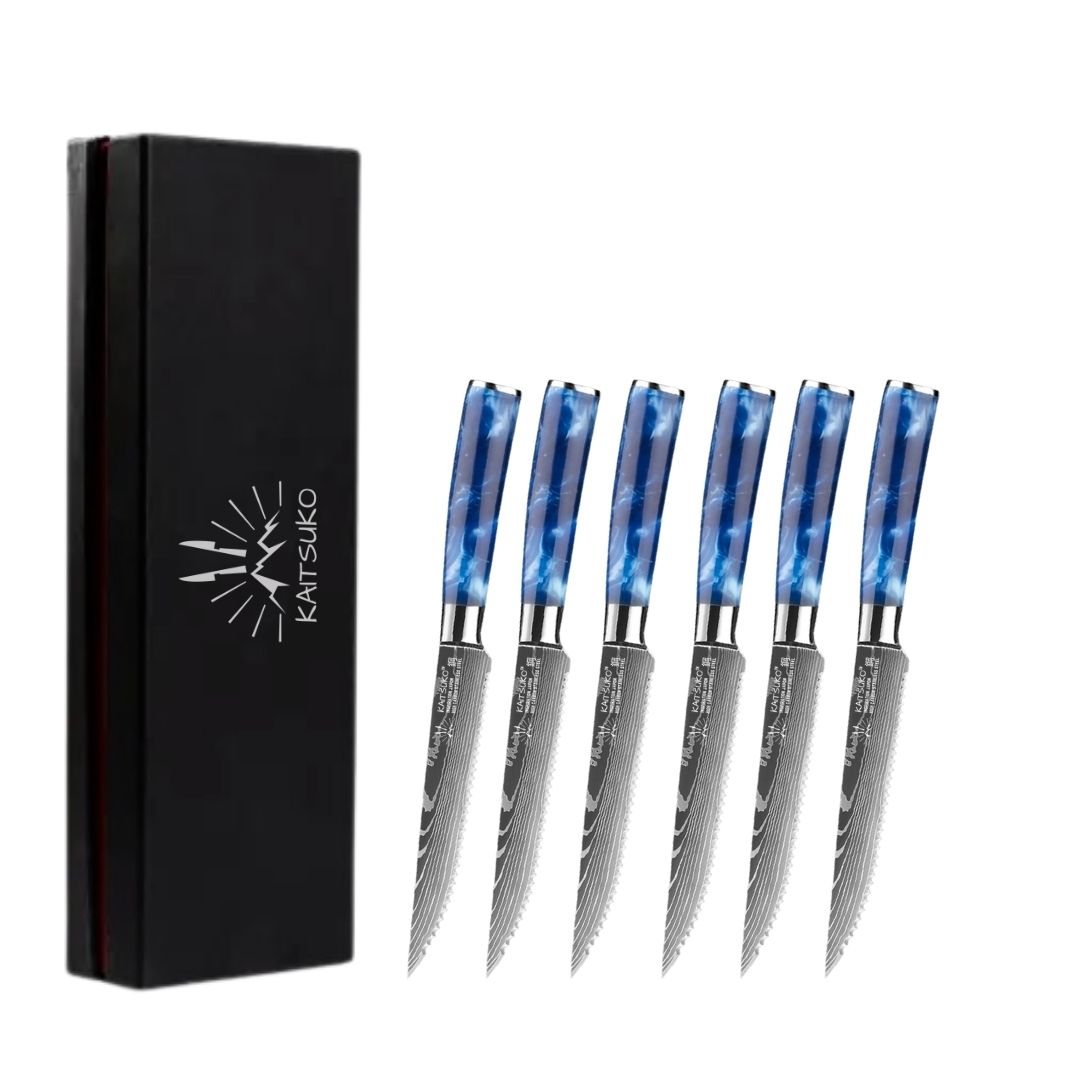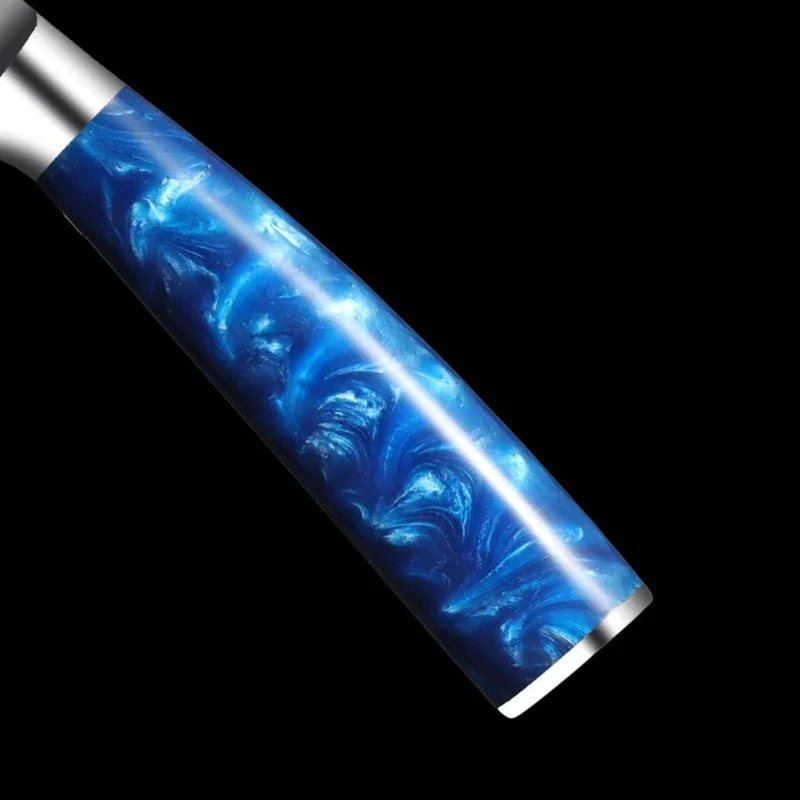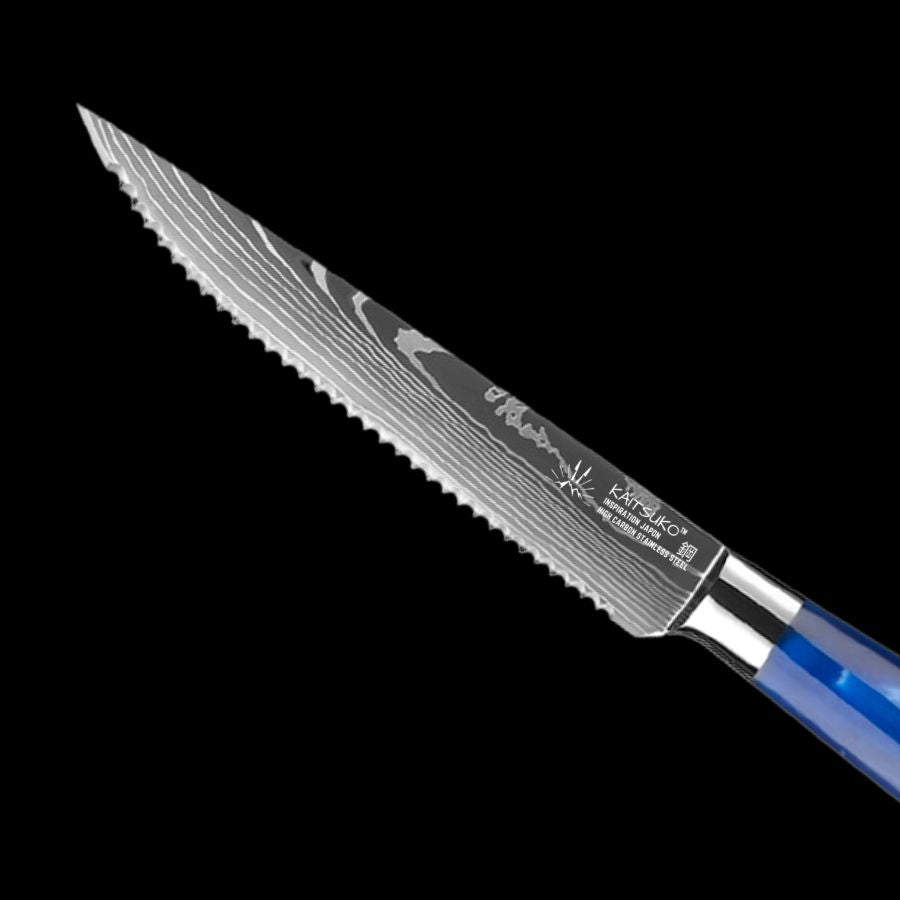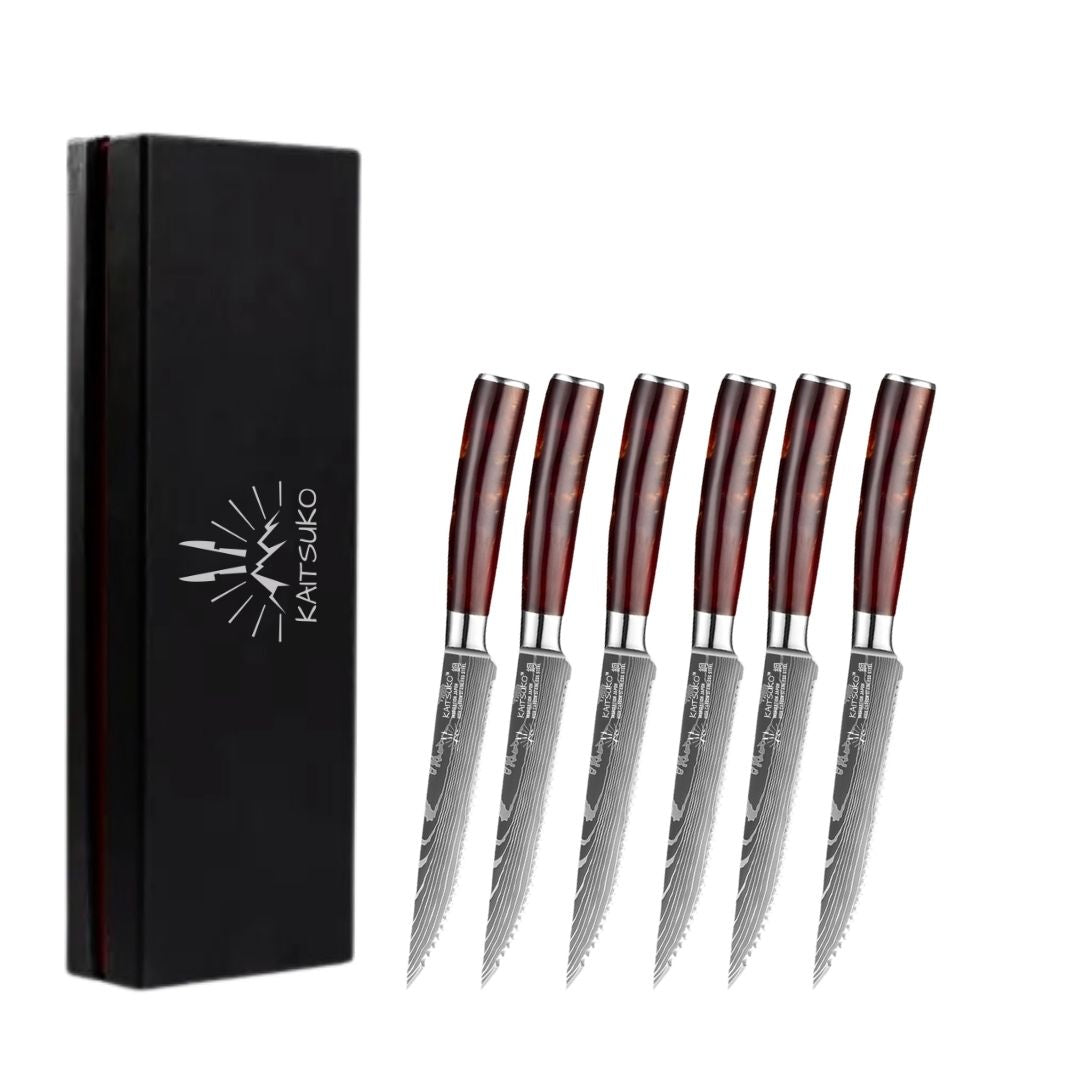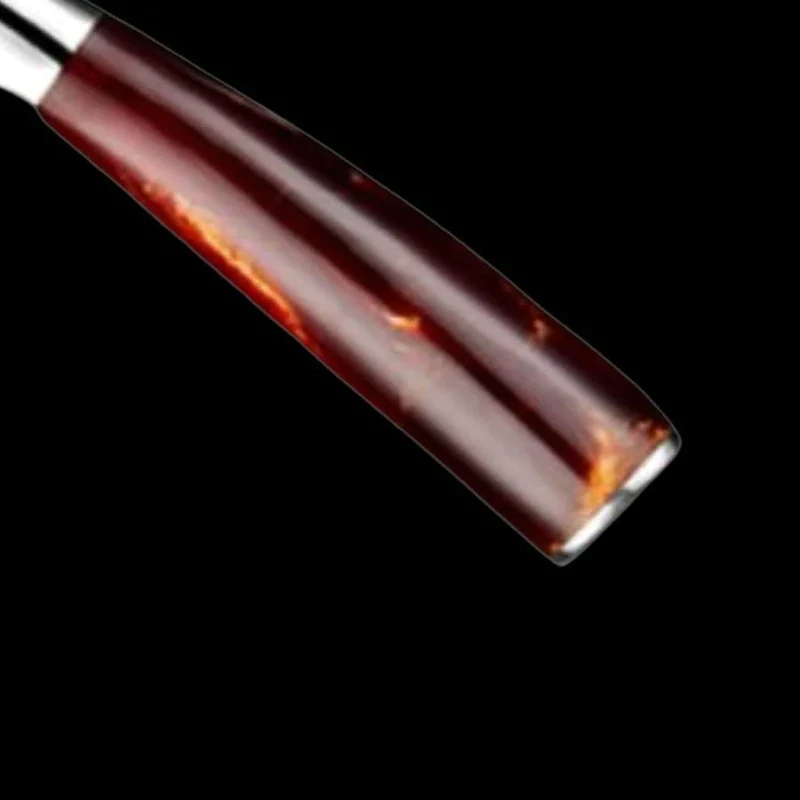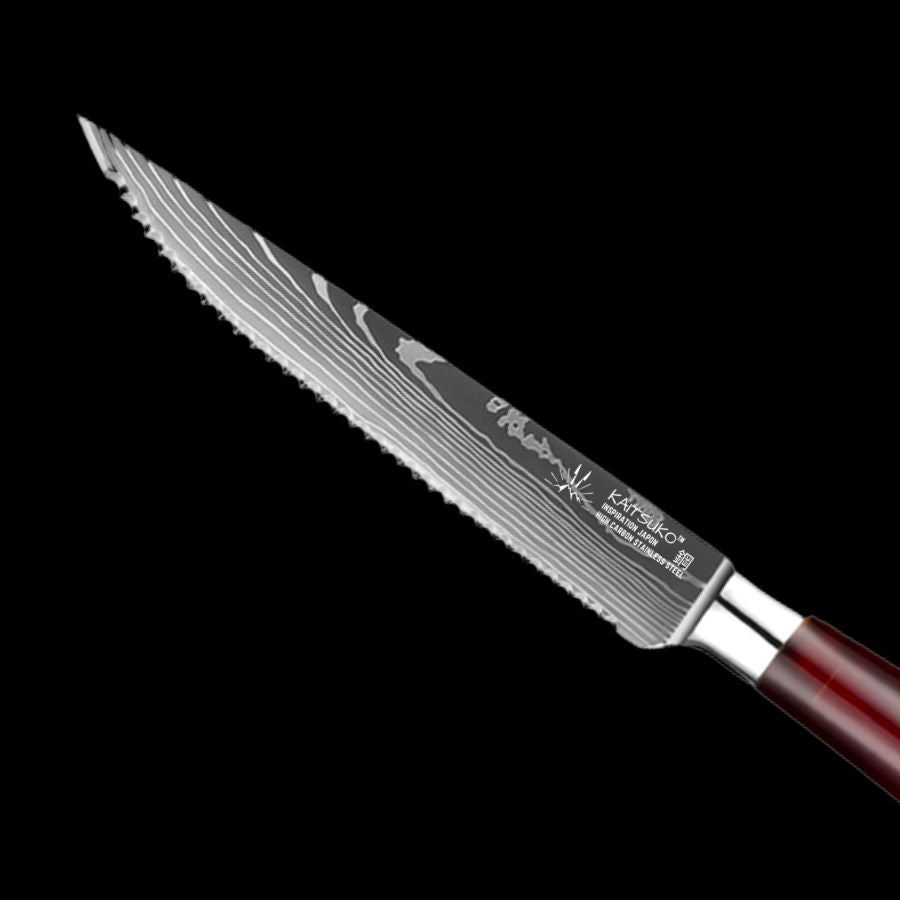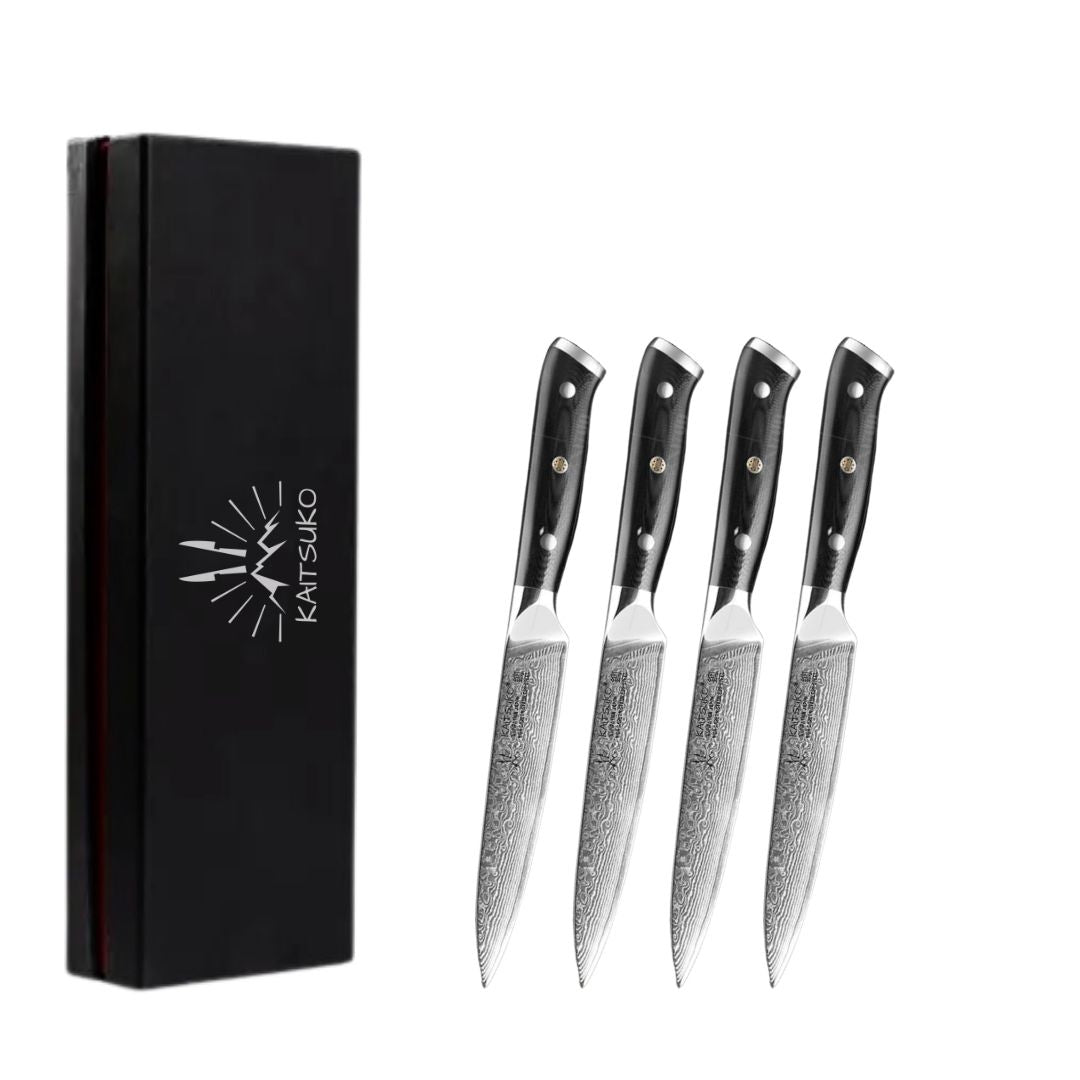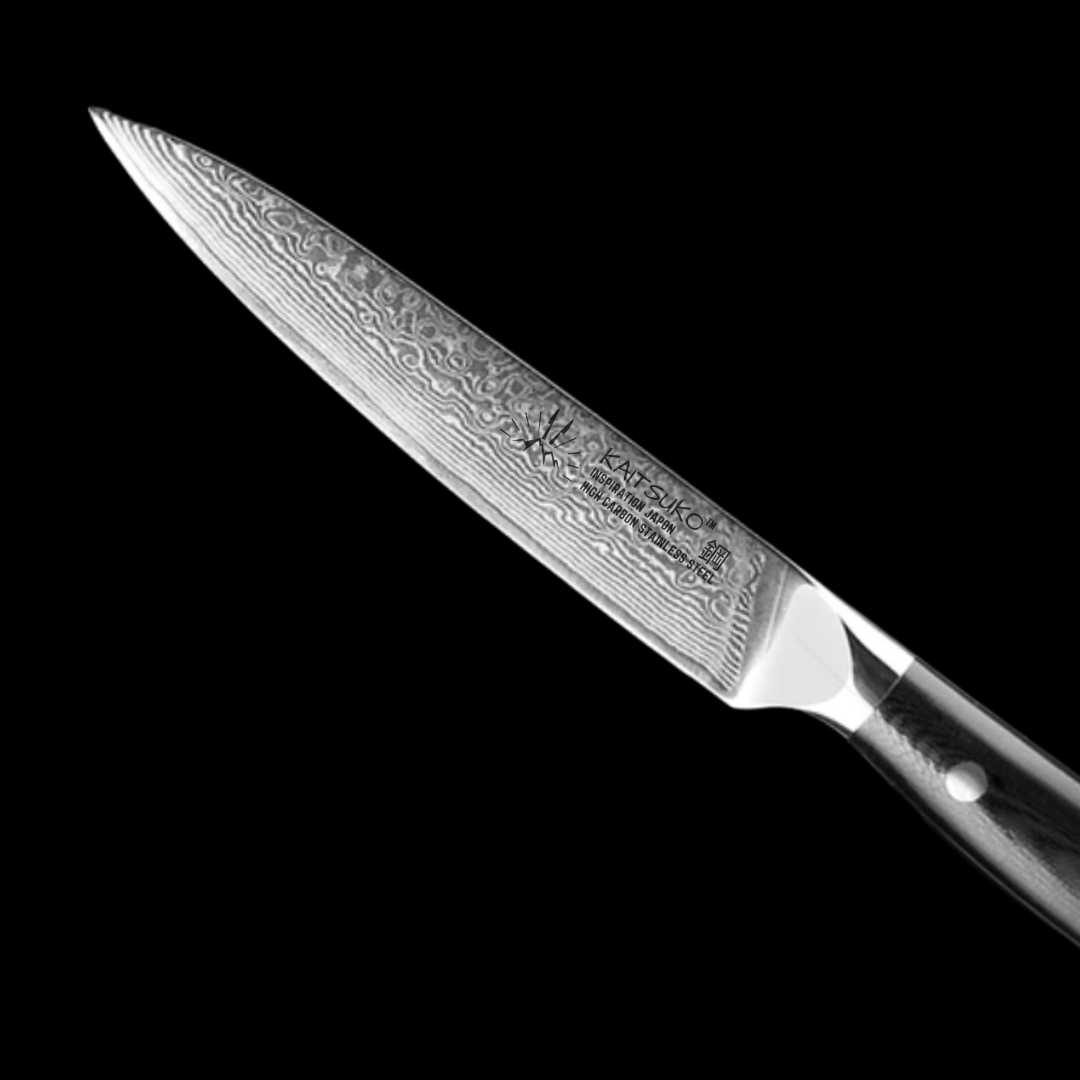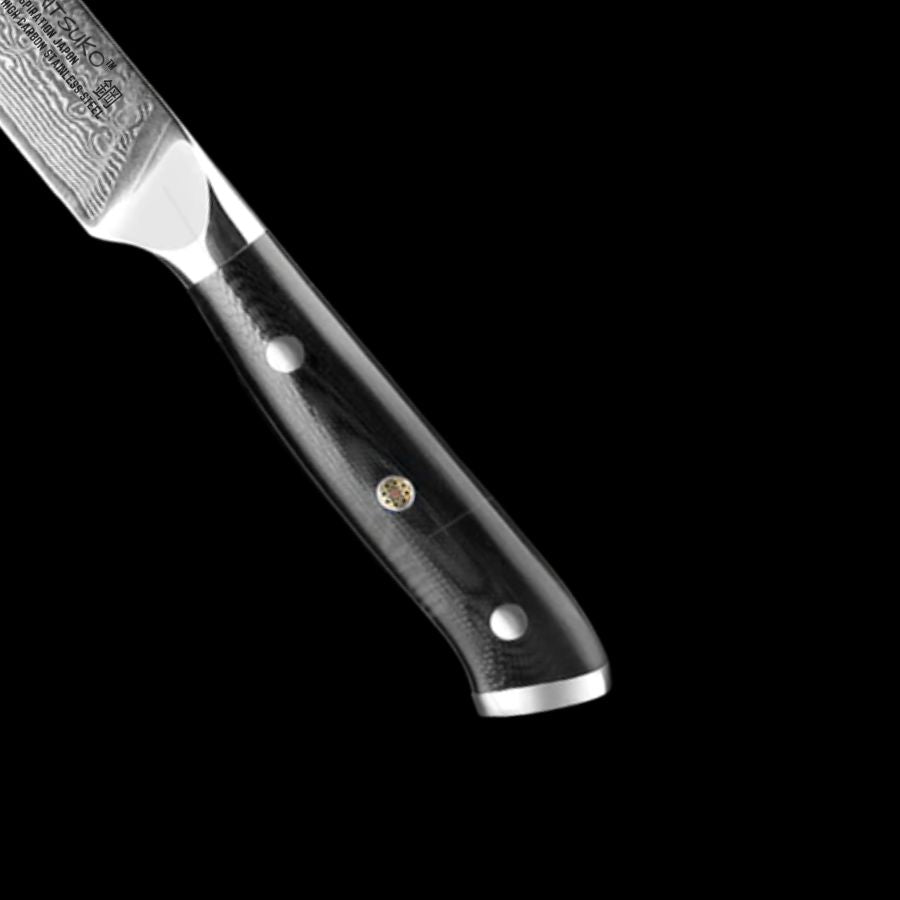Steak knives are a kitchen essential for any meat lover.
They are specially designed to cut meat with precision and ease, their sharp blade and ergonomics making cutting easier and ensuring a pleasant tasting experience.
In this article, we will guide you through the different types of steak knives available, detailing the specific characteristics of each, their materials and their respective advantages. Details to follow!
What is a steak knife?
As the name suggests, a knife Steak knife is a kitchen utensil specially designed for cutting cooked meats , especially steaks.
Featuring a sharp and often serrated blade , it allows you to cut meat precisely without fraying it, so as to preserve its texture and flavors. Unlike ordinary table knives, steak knives are made with high-quality materials such as stainless steel, which ensure durability and resistance to corrosion.
When it comes to their ergonomics, they are designed to offer a comfortable grip and, above all, optimal control when cutting. In practice, whether for everyday meals or special occasions, a good steak knife can therefore significantly improve your culinary experience!
The Benefits of Using a Steak Knife
Cutting precision
The main advantage of using a steak knife is access to unparalleled cutting precision . Thanks to its sharp and often serrated blade, this type of knife allows you to slice meats with surgical precision, thus avoiding tearing the delicate fibers.
This precision ensures that each piece of meat retains its texture and juice, providing an optimal taste experience while minimizing the loss of flavors.
Ease of use
A steak knife is also designed to ensure optimal comfort of use . Thanks to its ergonomic handle, you benefit from a secure and pleasant grip , with a balanced weight distribution promoting easy and precise handling.
Which steak knife to choose?
Blade materials
The choice of blade material is a key point for a steak knife:
-
Stainless steel blades mean durability and corrosion resistance;
-
Carbon steel blades are renowned for their exceptional sharpness (DAMASCUS steel knife type);
-
Ceramic blades , although less common, ensure lightness and great cutting precision.
Each material therefore has specific advantages, and influences the performance and longevity of the knife.
Be sure to check out our Chef Tanaka collection , as well as our premium Mer Jaune , Kyoto , and Komodo collections , for top quality steak knives!
Type of serration
The type of serration on a steak knife directly influences its cutting performance.
Fine serrated blades provide precise, clean cuts, ideal for tender meats, while wider, deeper serrations are much better suited to thicker, fibrous meats.
By choosing a knife serration that suits your needs, you can benefit from optimal cutting and a better tasting experience !
Ergonomics and design
The ergonomics and design of a steak knife are other criteria that should not be overlooked.
By this we mean that a well-designed handle ensures a secure grip. On the other hand, a balanced and aesthetic design improves both performance and user experience.
Which knife to use to eat meat?
If you are a meat lover, we recommend opting for a steak knife with a stainless steel or carbon blade for precise cutting!
Fine serrations are ideal for tender meats, while wider serrations are suitable for thicker cuts. Don't forget to check that the handle is ergonomic for maximum comfort of use.
How to use and maintain a steak knife?
Cutting techniques
Here are some cutting techniques for using a steak knife effectively:
-
Bias Cut : Tilt the knife slightly to slice the meat diagonally, providing more tender cuts;
-
Clean Cut : Use a smooth, continuous motion to avoid tearing the meat fibers;
-
Cut against the grain : You can also slice perpendicular to the grain of the meat for a more tender texture.
Cleaning and maintenance
To clean a steak knife , nothing could be simpler:
-
Hand wash with warm water and mild soap;
-
Dry it immediately to avoid corrosion;
-
Avoid the dishwasher, as chemicals and heat can damage the blade;
-
Sharpen the blade regularly with a suitable sharpener in order to maintain its sharpness;
-
Finally, store the steak knife in a knife holder or with a guard to avoid damage.
DISCOVER OUR ACCESSORIES TO TAKE CARE OF YOUR KNIVES
Steak knives at Kaitsuko
At Kaitsuko, our range of steak knives is particularly diverse , so that each of our customers can find the best kitchen knife according to their specific needs and budget .
Our collections, such as Chef Yakumoto and Chef Tanaka , offer you blades made of Damascus steel or 7CR17 steel, representing great durability. The ergonomic handles, made of materials such as G10 or Pakkawood, guarantee a comfortable grip and precise and clean cutting of your pieces of meat.
Our steak knives are not only functional , but also aesthetically pleasing , adding a touch of elegance to your table and any of your events!
Frequently Asked Questions About Steak Knives
How long does a steak knife last?
In general, a well-maintained knife can last for several years, even decades, although the lifespan of a steak knife depends mainly on its quality and maintenance. Regular sharpening and proper cleaning are essential to prolong its longevity!
How to store your steak knives?
It is recommended to store steak knives in a knife holder, magnetic bar or with guards to avoid damaging the blades. Avoid storing them loose in a drawer as this can dull and damage them!






